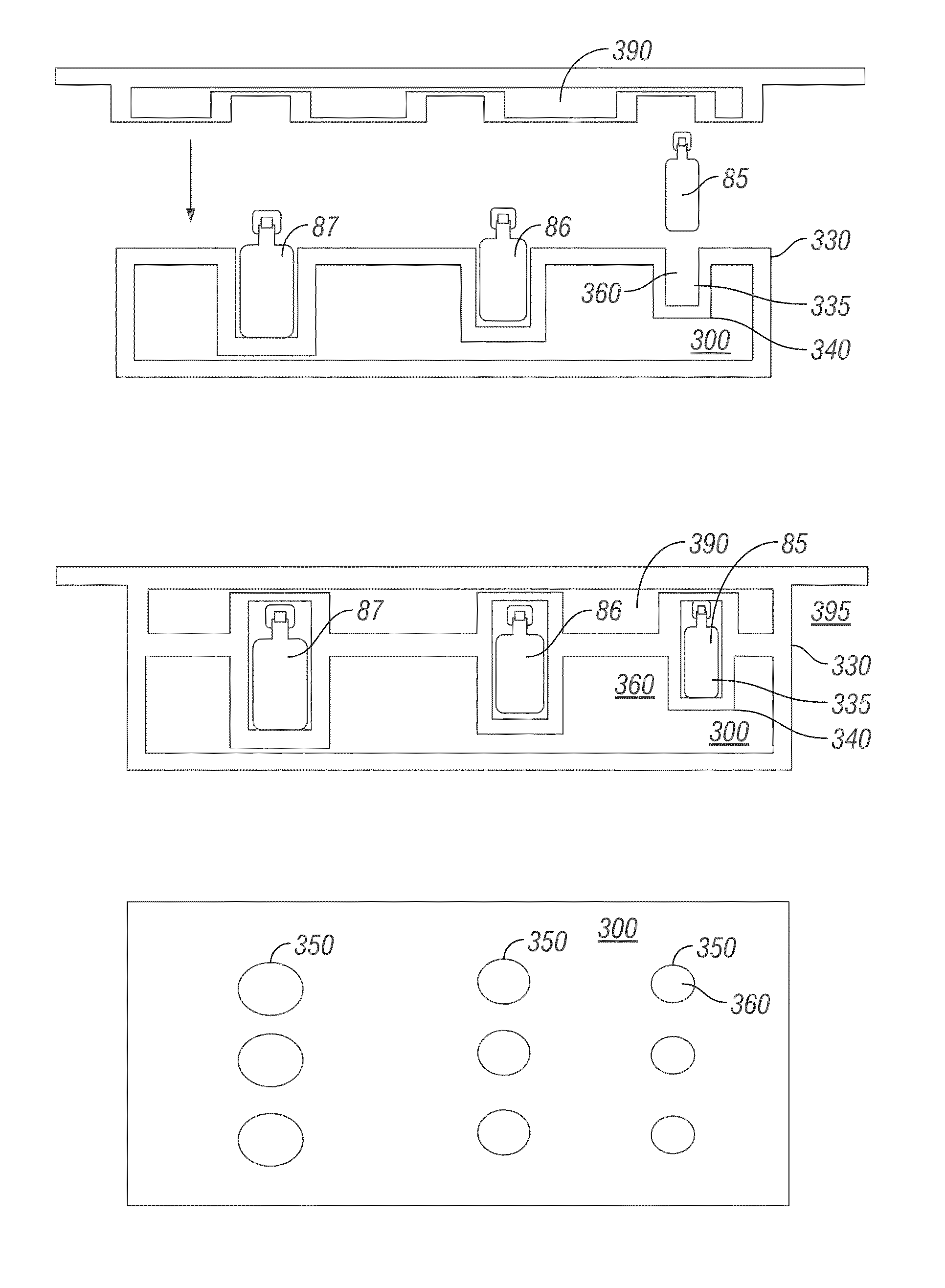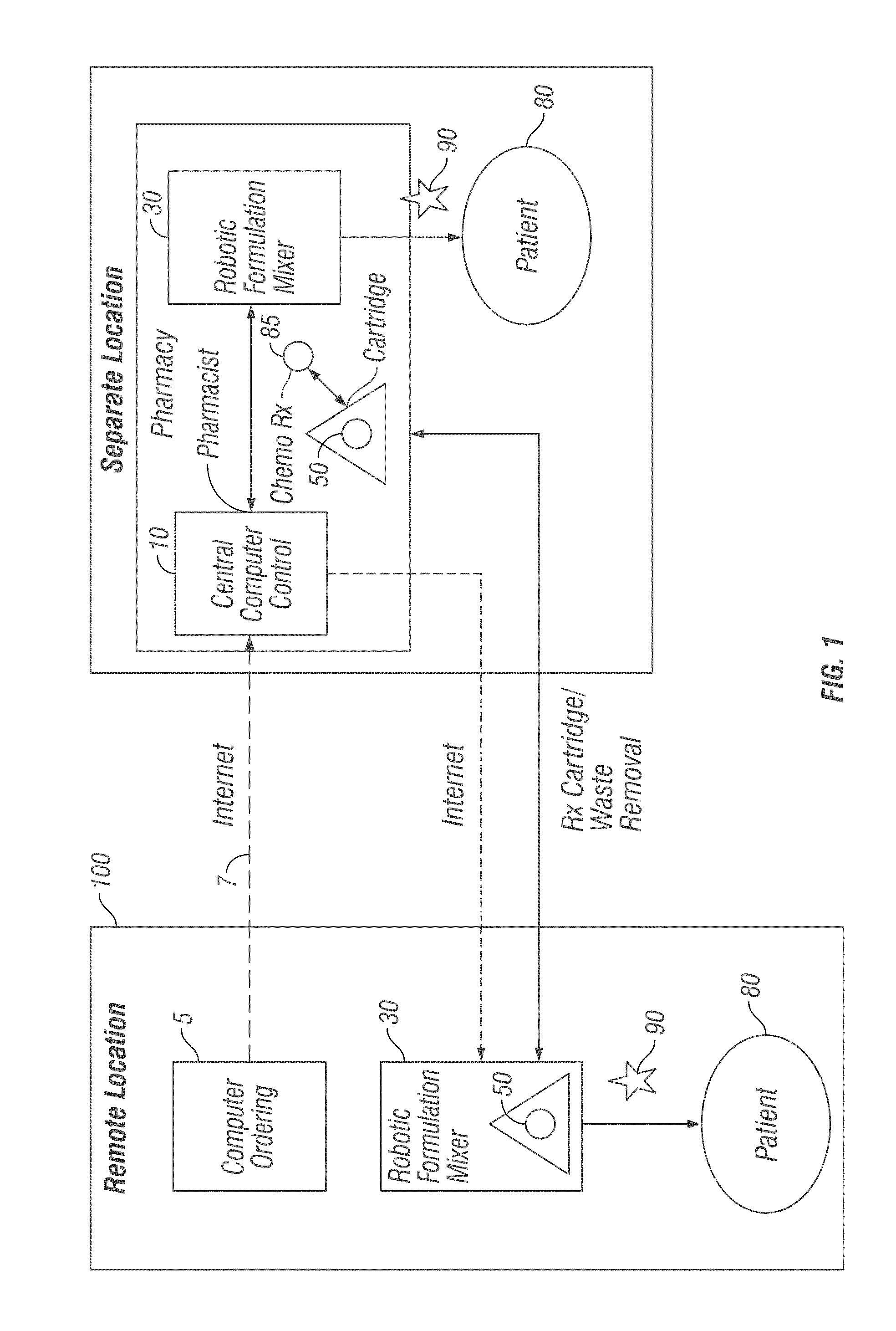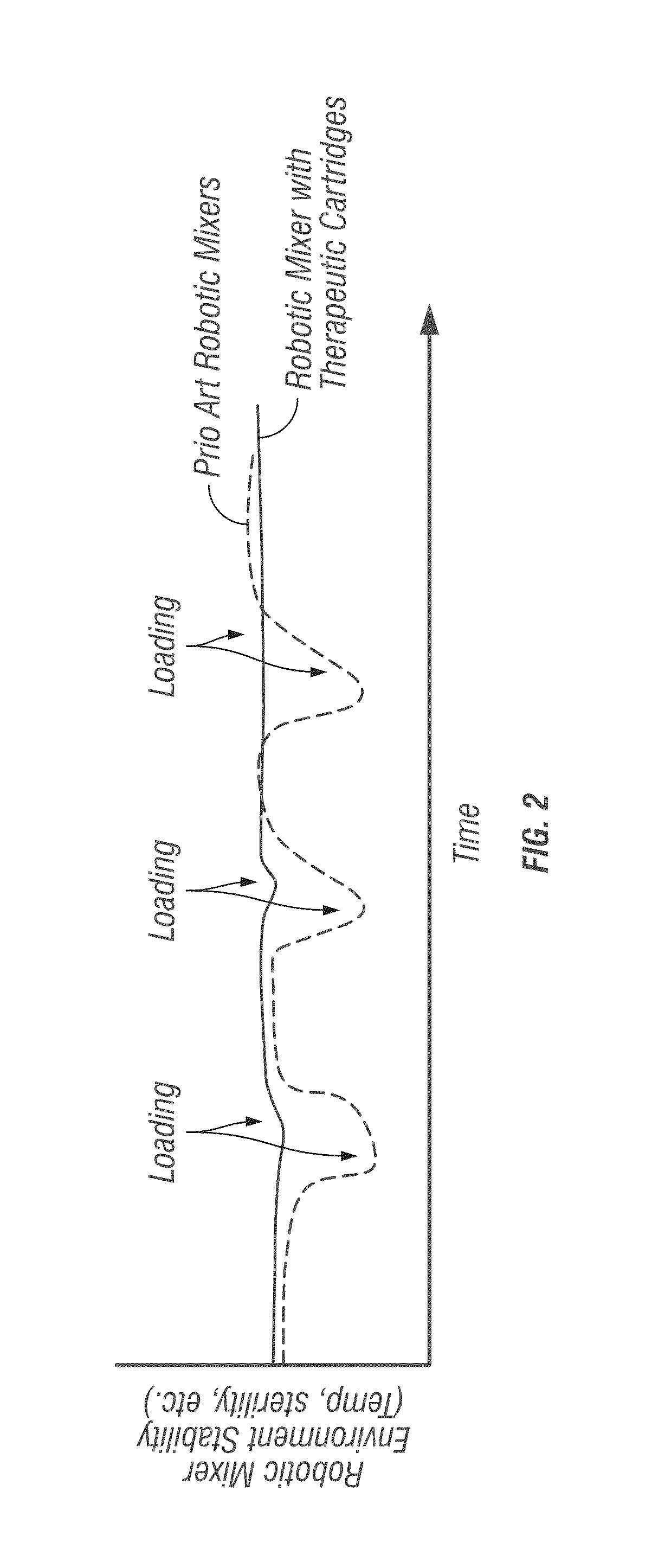Robotic infusion mixer and transportable cartridge
a technology of mixer and infusion cartridge, which is applied in the direction of liquid handling, packaging goods, packaged goods, etc., can solve the problems of increasing patient risk, presenting a number of risks and costs for both patients and healthcare facility staff, and inefficient utilization of therapeutic agents, so as to prevent liquid leakage
- Summary
- Abstract
- Description
- Claims
- Application Information
AI Technical Summary
Benefits of technology
Problems solved by technology
Method used
Image
Examples
Embodiment Construction
[0060]In keeping with long-standing patent law convention, the words “a” and “an” when used in the present specification in concert with the word comprising, including the claims, denote “one or more.” Some embodiments of the invention may consist of or consist essentially of one or more elements, method steps, and / or methods of the invention. It is contemplated that any method or composition described herein can be implemented with respect to any other method or composition described herein.
[0061]As used herein “closed-system drug-transfer device” refers to a drug transfer device that mechanically prohibits the transfer of environmental contaminants into a system and the escape of hazardous drug or vapor concentrations outside the system.
[0062]Robotic Infusion Mixer System
[0063]An embodiment of the invention provides a robotic infusion formulation mixer system for remote just-in-time formulation of therapeutic infusions comprising a remote robotic infusion mixer and one or more tra...
PUM
| Property | Measurement | Unit |
|---|---|---|
| flexible | aaaaa | aaaaa |
| pressure | aaaaa | aaaaa |
| time | aaaaa | aaaaa |
Abstract
Description
Claims
Application Information
 Login to View More
Login to View More - R&D
- Intellectual Property
- Life Sciences
- Materials
- Tech Scout
- Unparalleled Data Quality
- Higher Quality Content
- 60% Fewer Hallucinations
Browse by: Latest US Patents, China's latest patents, Technical Efficacy Thesaurus, Application Domain, Technology Topic, Popular Technical Reports.
© 2025 PatSnap. All rights reserved.Legal|Privacy policy|Modern Slavery Act Transparency Statement|Sitemap|About US| Contact US: help@patsnap.com



